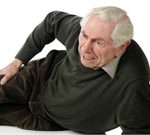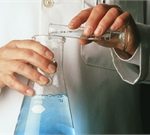(HealthDay News) — Stomach cramps typically refer to abdominal pain or discomfort between your chest and groin. Causes range from constipation to food intolerance, says the Icahn School of Medicine at Mount Sinai. To help ease mild stomach cramps at home, Mount Sinai suggests: Sip water or other clear fluids. Only drink sports drinks in small amounts. Avoid solid food for the first few hours. If you’ve been vomiting, wait six hours and then eat small amounts of mild foods, such as crackers. Do not take any medicine without talking to your doctor. Call your doctor if stomach cramps are accompanied by other symptoms, such as persistent bloating, diarrhea, weight loss or fever.
A little about: Weekly Gravy
All Sauce from Weekly Gravy:
The Financial Reward of Slimming Down

If you’re overweight or obese, shedding pounds can help improve your health and your longevity. What’s more, doing so may also significantly boost your bank balance. Researchers at Johns Hopkins University in Baltimore wanted to know how a person’s expenses and income might change if their weight went from obese to overweight to normal at different ages. So they created a computer simulation that looked at a person’s health and weight over the years. They considered time lost from work, health complications related to being overweight — such as heart disease, high blood pressure and diabetes — and direct medical costs to insurers and health care facilities, among other things. How much could you save? If you’re 20, the research, which was published in the Journal of Obesity, found that slimming down from obese to overweight saves you more than $17,000 in direct medical costs and lost productivity over your lifetime. Reach a healthy weight and the savings exceed $28,000. If you’re in your 40s, going from obese to overweight saves you around $18,000. Drop to a healthy weight and you’ll net an average lifetime savings of about $31,000. Savings peak for those who slim down in the midlife years. A 50-year-old who goes from obese to overweight can see a lifetime savings of about $36,000. You’ll add even more cash to your wallet if… read on >
To Avoid Falls, Check Your Balance

Bad balance is a common cause of dangerous falls, especially among older adults. Falls send more than 2 million adults to the emergency room every year and often result in lengthy rehab stays. Preventing falls is a priority for staying healthy and preventing painful broken bones as you age. Easy strength and balance exercises that you can do anytime, anywhere, such as tai chi and yoga, can help you stay steady on your feet. But first it’s important to know how good (or lacking) your balance is. Grab a friend or loved one, a sturdy chair and a stopwatch to check your balance with a quick test called the single leg stance. It basically involves standing on one leg, and doctors use it to predict who might be at risk of falling. Stand barefoot in front of the chair but don’t touch it. Cross your arms. Lift one leg up off the floor and start the timer. As you feel yourself start to sway, immediately steady yourself with the chair and stop the timer. Here are the average times that indicate good balance when you stand on one leg based on age: Ages 18-39: 43 seconds for men and women Ages 40-49: 40 seconds for men and women Ages 50-59: 36 seconds for women, 38 for men Ages 60-69: 25 seconds for women, 28 for… read on >
Fatty Diets Tied to Leading Cause of Vision Loss in Seniors

Diets heavy in red meat and fatty foods could help spur a leading cause of vision loss in older Americans, new research suggests. The study found that people who ate more typical Western diets were three times more likely to develop an eye condition that robs you of your central vision — late-stage age-related macular degeneration. “What you eat seems to be important to your vision, and to whether or not you have vision loss later in life,” said study lead author Amy Millen. She’s an associate professor in the department of epidemiology and environmental health at the University at Buffalo’s School of Public Health and Health Professions, in Buffalo, N.Y. “People know that diet influences cardiovascular risk and the risk of obesity, but the public may not know that diet can affect vision loss,” Millen said. Age-related macular degeneration occurs when a part of the eye called the macula is damaged. Sometimes this happens when deposits called drusen grow on the macula. Or it can occur when new blood vessels keep forming and leak blood, scarring the macula, according to the American Academy of Ophthalmology. Genetics and smoking are known risk factors for age-related macular degeneration. The study included almost 1,300 people from a nationally representative sample. Most did not have macular degeneration. There were 117 who had early AMD, and 27 had late.… read on >
Health Tip: Signs of a Herniated Disc
(HealthDay News) — The bones that form your spine are cushioned by round discs. A herniated disc is a disc that has been pushed out of place, says the American Association of Neurological Surgeons. The group mentions warning signs of a herniated disc: Low backache. Numbness or weakness in parts of the body. A sharp, electric shock-like pain on one side of the body. Burning or tingling that radiates into the leg or shoulder. Sometimes, these symptoms can worsen with standing, walking or sitting.
Could You Be Allergic to Additives?

You suddenly break out in a rash or your throat gets scratchy. You assume you’re allergic to something … maybe pollen or a detergent. But could you be allergic to something in your food or medicine, and how could you tell? The medical community disagrees as to whether additives in food or even medications — such as dyes, preservatives or emulsifiers — cause true allergic reactions. And many are convinced that if reactions do occur, they are rare rather than widespread. The traditional thinking has been that the molecules from chemicals in food are too small to cause major reactions. But one small study, published in the Journal of Drugs in Dermatology, found that patients who had skin disorders improved when they switched to medications without the dyes FD&C Blue No. 1 (bright blue) and Blue No. 2 (indigo carmine). The researchers stated that reactions to agents that color medications and foods may be more common than once appreciated. Common Food Additives Vitamins Minerals Flavorings Colorings Preservatives In recent years, the move towards all things “natural” has caused many food manufacturers to switch from synthetic additives to natural ones derived from plant, animal or even insect byproducts. Ironically, some experts say that our bodies may react more to natural than synthetic dyes and preservatives because our immune system is trained to recognize them as invading… read on >
The Pluses of ‘Steady-State’ Training

It’s hard to escape all the fanfare surrounding HIIT, or high-intensity interval training, which prevents plateaus by keeping your body at your max heart rate for very short intervals. But another training approach called steady-state training, or SST, may be just as important, if not more so, depending on what you’re trying to accomplish. Steady-state training is the opposite of HIIT yet, at the same time, is complementary to it. It involves maintaining a specific heart rate below your target maximum for an extended period of time. Using a treadmill workout as an example, with HIIT you walk for two minutes and then run all out for one minute. With SST, you walk at a brisk pace the whole way through. While HIIT is a known calorie torcher, there are plenty of pluses to SST. It’s great for strengthening the heart: Maintaining a steady state of aerobic output forces the body to become efficient at pumping oxygenated blood through the body. A constant steady state also helps the body burn fat for fuel. There also is less chance of injury than when you change pace in high-intensity interval training. So does SST have any downside? The answer is yes. You are at a higher risk for stress or repetitive injury simply because you are doing the same thing for a longer period of time over… read on >
Is Green the Feel-Good Color of the Holidays?

There’s one type of green Christmas that’s likely to bring joy to gift-givers and recipients alike, a new Canadian study suggests. That’s one based on green consumerism — a push to buy gifts produced in ways that protect the natural environment. For this study, researchers at Concordia University in Montreal asked volunteers how a number of green and not-green products made them feel. The green products generally produced positive feelings, researchers reported. Those who listened to music on green-labeled headphones, for instance, said they enjoyed the music more than those who used conventional headphones. “The warm glow is a good overall feeling,” said study co-author Onur Bodur, a professor of marketing. “It is found in other literature relating to pro-social behavior. You get the feeling when you help others and have a sense of accomplishment that gives you satisfaction.” Participants also reported feeling a warm glow after using a green product, and those who felt isolated reported feeling less so, according to the study published recently in the Journal of Consumer Research. The study also found that actually using green products, such as cleaning solutions, helped dispel a belief that such products were inferior. The findings could have big implications for retailers. “Imagine that the chair you are sitting on is certified bamboo, or the tablecloth at a restaurant is made of recycled materials and… read on >
Health Tip: Winter Sports Safety
(HealthDay News) — Sports such as skiing, snowboarding and ice skating can sometimes lead to sprains, dislocations and fractures. In fact, some 200,000 people are treated for winter sports-related injuries every year, says the American Academy of Orthopaedic Surgeons. To avoid hurting yourself, the academy suggests: Never engage in a winter sport alone. Keep in shape and warm up sufficiently. Wear appropriate protective gear and layers of water-resistant clothing. Check that equipment is working before use. Take lessons from a qualified instructor. Drink plenty of water before, during and after the sport. Be aware of how to get help if frostbite or hypothermia occur. Pay attention to weather updates and storm warnings. Abide by all rules of the sport.
How to Stay Fit When You’re Traveling for Work or Fun

If you travel a lot for business or pleasure, you may think that the most exercise possible is lugging your bags in and out of a car or through an airport. But it’s important to get in real exercise even when you’re away from home. If you’re a business road-tripper, look for snippets of time to move those muscles, like when you stop for gas. Any bodyweight calisthenics will do. Think: squats. There are many varieties, but the basic is a powerhouse move. Stand with feet a little more than shoulder-width apart, arms out in front of you. Bend the knees and push your hips back, lowering your body until your thighs are below your knees if possible. And then return to standing position. Do three sets of 10. At your hotel, do planks or push-ups and some crunches. If stuck in a car or on a plane for any length of time, try isometric exercises, where you can contract your muscles without needing to move around a lot. Put the palms of your hands together and press as hard as you can. That will engage your chest muscles. Contracting your gluteal muscles can help your lower back. Remember to hold each isometric exercise for 10 seconds. Do a few sets of 10 reps each. Once you get to your destination, if you don’t have… read on >









